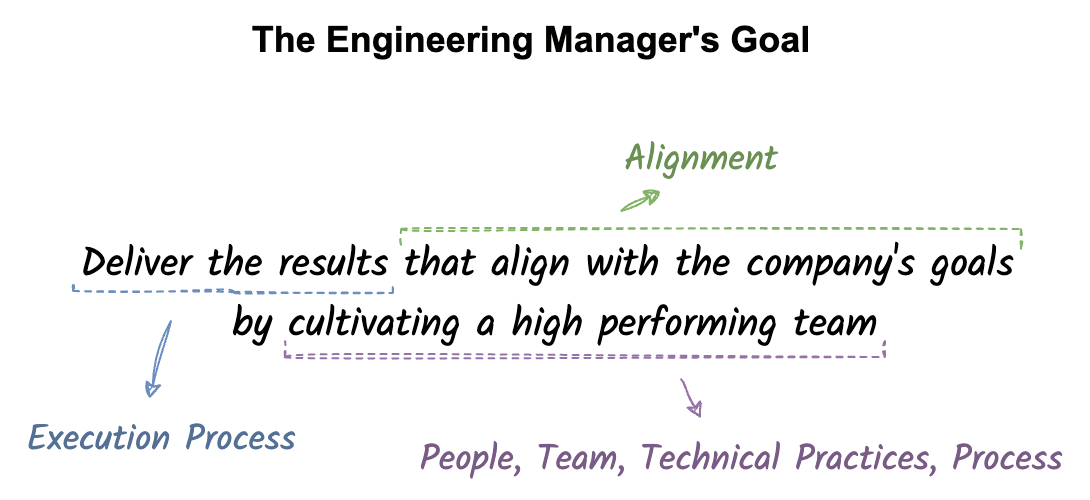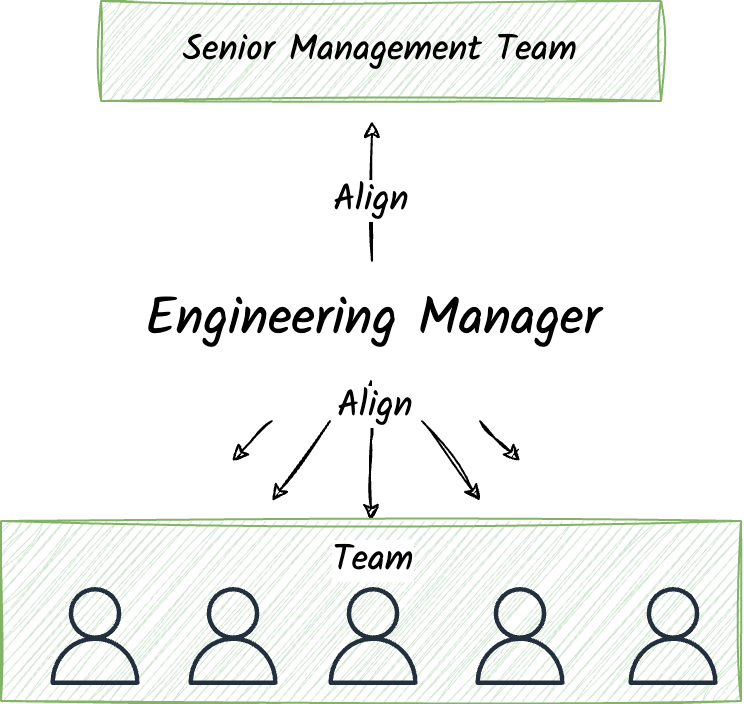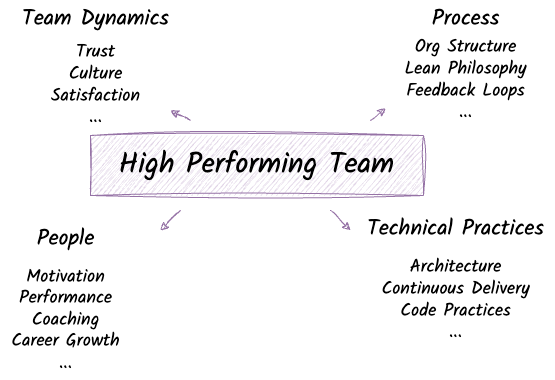Understanding and Achieving Your Goal as an Engineering Manager: 3 Fundamental Principles
As an Engineering Manager, you have a lot on your plate and need a wide range of skills to be successful. From technical expertise, to execution know-how and people management, mastering all these skills takes a lifetime, no doubt about it.
When I first stepped into the role of Engineering Manager, my responsibilities were clearly defined by my company. However, while the tasks were clear, I found myself wondering about the bigger picture – what’s the ultimate goal of an Engineering Manager?
Over the years, through my experiences, chats with managers and peers, training sessions, and a lot of reading, I’ve formed a clearer picture of what it means to be an effective Engineering Manager.
In this post, I’m sharing the main goal of an Engineering Manager along with the three fundamental principles that have evolved through my journey, experiences, and approach. These principles will break down the essential areas you need to focus on to achieve your goals and succeed as an Engineering Manager.
The Engineering Manager’s ultimate goal
So, what’s the ultimate goal of an Engineering Manager?
Simply put, the goal of an engineering manager is to deliver results that align with the company’s goals by cultivating a high-performing team.
- Align with the company’s goals
- Deliver results
- Cultivate a high-performing team

These are the three fundamental principles. You need to leverage your engineering expertise along with your execution and leadership skills in these areas.
Let’s dive into what you need to focus on to be successful.
1. Align with the Company’s Goals
If you don’t know where you’re going, you might not get there.
-Yogi Berra
Producing output is one thing. Delivering the right results is another.
While it might seem obvious, teams often diverge from the company goals.
- Fantastic news! We automated the coffee machine to make custom lattes for the team!
- Automated coffee? That’s a fun idea, but weren’t we supposed to be working on the new payment gateway integration?
- Well, the team needed a morale boost, so we thought this would be a great way to do it.
- Meanwhile, our biggest client just threatened to pull their account because of the payment gateway delays. We could lose millions!
- Oooops, I didn’t realize the situation was that bad. We’ll shift our focus to the payment gateway right away…
This mismatch between company goals and team output is often referred in different ways:
- Andy Grove calls it Activities vs. Output. 1
- In “Accelerate,” it’s called output vs. outcomes, expanding on local vs. global priorities.2
What do you need to achieve the right results? Alignment.

There’s a lot of literature on alignment tools like OKRs3, MBOs4, OGSMs5 and KPI-driven strategies, but simply put, you need to:
- Continuously check with your manager to make sure you’re prioritizing the right things.
- Communicate these priorities to your team so everyone is on the same page.
Remember, focus is fluid. It changes, and you need to keep adjusting.
2. Deliver Results - Enabling Your Team to Execute
Alright, we are aligned. We know what we need to do. What’s next? Execution!
Delivering results is your top priority as an Engineering Manager. Frankly, everything you do is, one way or another, enabling an effective execution.
No matter how organized your documentation is, how much you’ve achieved in building trust and upskilling your team, if you don’t deliver, you’ve failed.

Building the right processes to deliver results is what we call execution. As a manager, leading a team means that execution is no longer about putting down time working on the right thing by yourself. You need to coordinate your team and ensure that everyone has the tools, frameworks, and processes to get the job done.
What do you need to deliver results?
- At the very least, you need to establish the essential processes to start delivering. It doesn’t have to be efficient or optimal initially.
- Start with resolving anything that blocks your team from delivering.
- Then, start executing with a solid execution framework and a well-defined Software Development Lifecycle (SDLC). Everyone should know what they need to do and how to do it.
- Once you have the fundamental processes and tools in place, focus on cultivating a high-performing team through high-leverage activities. We’ll cover more on that in #3.
3. Cultivate a High-Performing Team - Optimize
Once you’re delivering effectively on the right direction, your job as a manager is to optimize your execution.
There’s a huge difference between a team that delivers effectively and a team that delivers efficiently.
What do you optimize for? At a high level you’re looking at:
- Throughput
- How quickly you can deliver new features
- Stability
- How stable and reliable your systems are
- How stable your team is
To achieve this, focus on high-leverage activities1. As a manager, you’re always on the lookout for the smallest efforts that produce the biggest results.

These activities aren’t just about process; they include anything that helps improve results. When it comes to engineering management, you can think of this in four main categories:
- Technical Practices (Software Architecture, Technology etc)
- People Management (Motivation, Performance Management, Coaching, Expectations Alignment etc)
- Process (Org structure, Delivery workflow etc)
- Team Dynamics (Culture, Trust etc)
Conclusion
We’ve explored the ultimate goal of an Engineering Manager: to deliver results that align with the company’s goals by cultivating a high-performing team.
To do this, you need:
- A solid execution framework and SDLC: Ensure your processes are well-defined and effective.
- Alignment with your manager and team on your goals: Keep everyone on the same page about your priorities and goals.
- Optimization using Technical Practices, People Management, Team Dynamics, and Process-related high-leverage activities.
I hope this gives you a high-level perspective on the key goals.
Make no mistake, in this post, I’ve only listed the three essential high-level focus areas of engineering management. This is just a peek into the engineering management world. Each of these items contains a whole world of information, frameworks, and tools that can help engineering managers achieve their goals.
In my next blog posts, I’ll dive deeper into each focus area and its sub-topics, exploring the “how” of each one in more detail.
Stay tuned! Cheers!
References
-
Accelerate: The Science of Lean Software and Devops: Building and Scaling High Performing Technology Organizations, Book ↩
-
Objectives, goals, strategies and measures (OGSM), Wikipedia ↩
Leave a comment